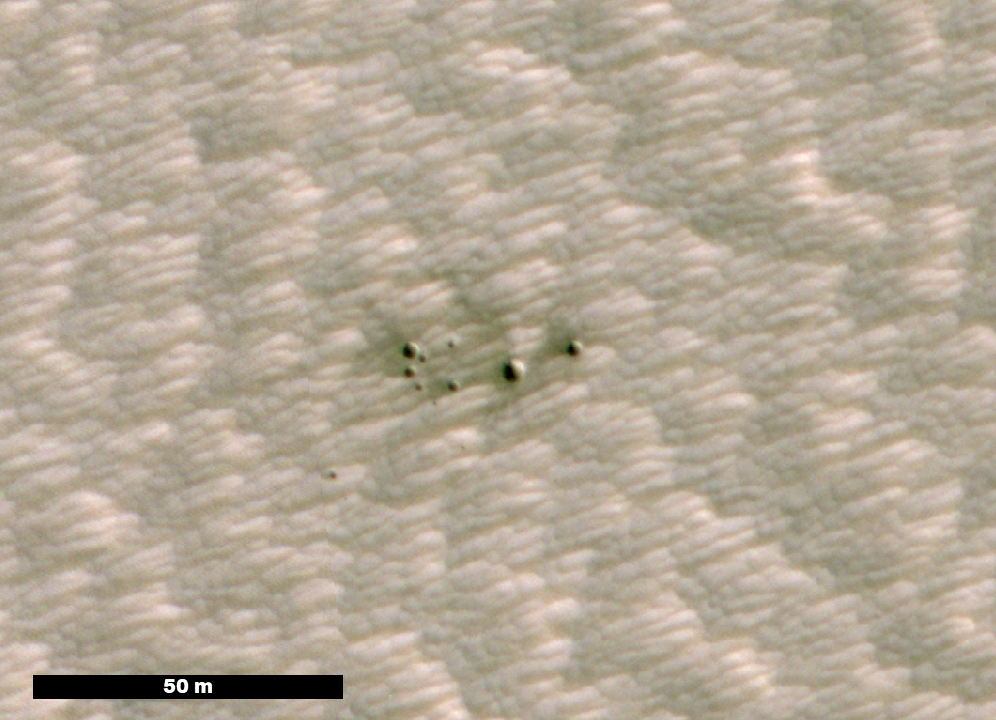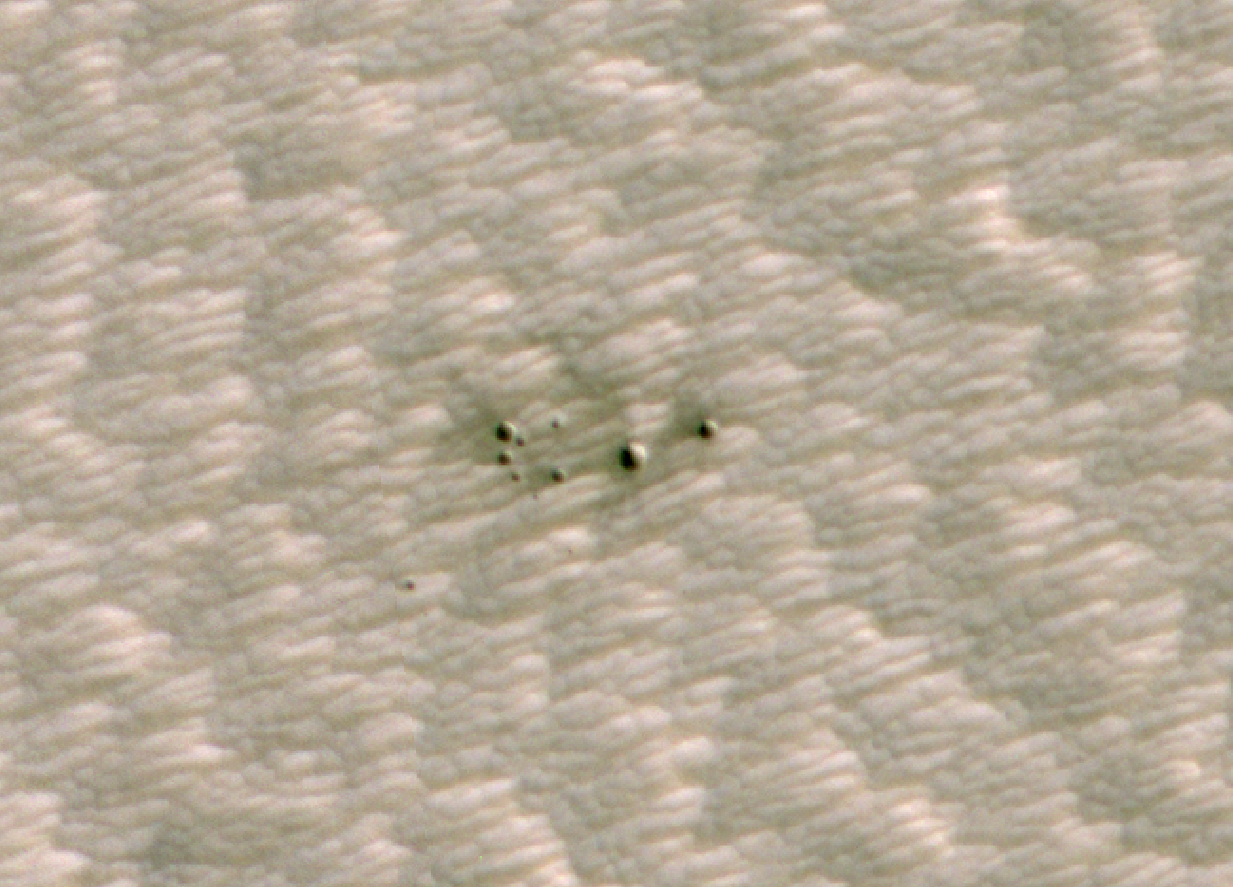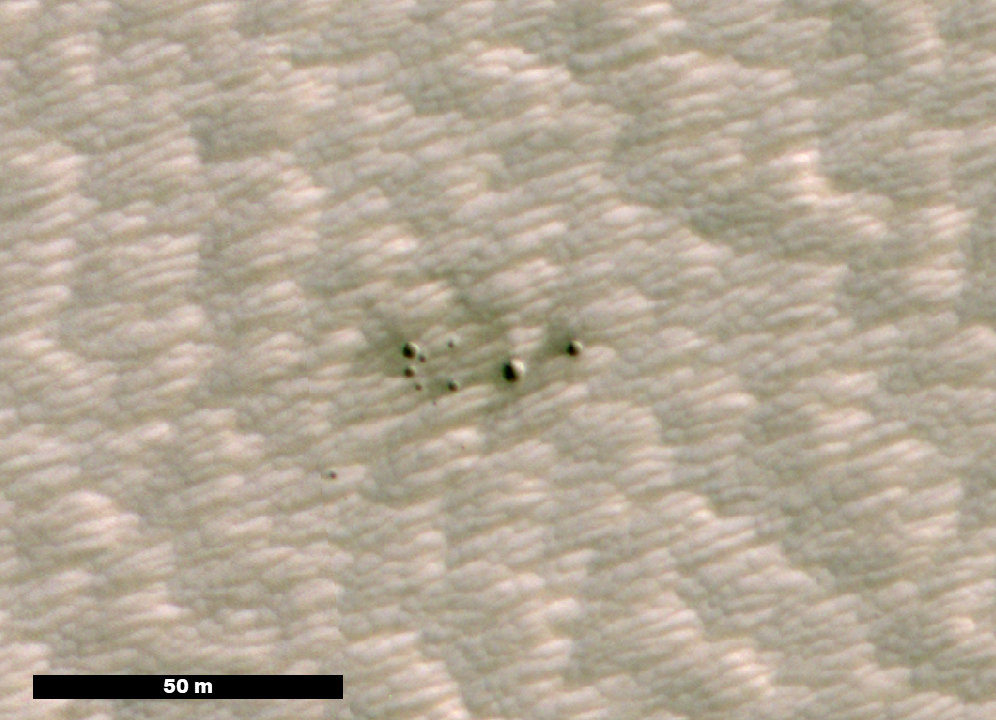AI Spots a Cluster of Mars Craters: HiRISE’s View

| Credit | NASA/JPL-Caltech/MSSS |
|---|---|
| Language |
|
The High-Resolution Imaging Science Experiment (HiRISE) camera aboard NASA's Mars Reconnaissance Orbiter took this image of a crater cluster on Mars, the first ever to be discovered artificial intelligence (AI). The AI first spotted the craters in images taken the orbiter's Context Camera; scientists followed up with this HiRISE image to confirm the craters. The Context Camera's view of the craters can be found in Machine Learning Spots a Cluster of Mars Craters: Context Camera's View.
These craters created by several pieces of a single meteor. The largest of the craters is about 13 feet (4 meters) wide. In total, the craters span about 100 feet (30 meters) of the Red Planet's surface. The craters were found in a region called Noctis Fossae, located at latitude -3.213, longitude 259.415.
The AI used to discover these craters was developed by NASA's Jet Propulsion Laboratory in Southern California. JPL, a division of Caltech, manages the Mars Reconnaissance Orbiter for NASA's Science Mission Directorate, Washington. Lockheed Martin Space, Denver, built the spacecraft. Malin Space Science Systems, San Diego, provided and operates the Context Camera. University of Arizona provided and operates HiRISE.


